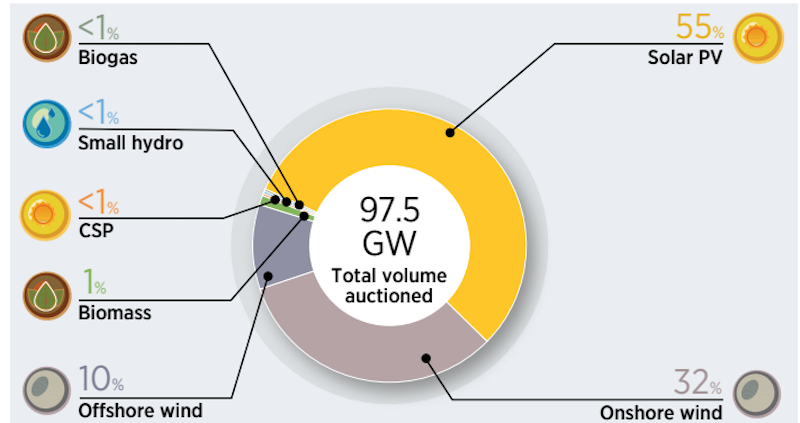Geothermal energy – and renewable energy auctions, not quite a match
According to a report by IRENA, about 50 countries have used auctions to procure renewables-based electricity. With a pure focus on price, these systems have failed to ensure a fair valuation for geothermal-based electricity based on its baseload attribute and consistent energy supply.
In a recently released study by the International Renewable Energy Agency (IRENA), preliminary results are provided on the status and trends of renewable energy auctions. The initial findings can be downloaded here (pdf).
The brief – produced for IRENA’s 17th Council in June 2019 – outlines preliminary findings from IRENA’s next major study of auctions, provisionally entitled Renewable Energy Auctions: Status and Trends Beyond Price. A focus of the study will be how to design auctions to achieve objectives beyond price discovery. Auctions designed in innovative ways can help to achieve specific country goals, beyond solely procuring electricity at the lowest price. These goals might include integrating higher shares of variable renewable energy into the grid; ramping up solar and wind power, in particular; ensuring greater participation of communities or other new and small players; and maximising the socio-economic benefits of renewables. Alongside such diverse aims, ensuring timely project completion remains a paramount objective.
In the 2017-2018 period, around 50 countries used auctions to procure renewables-based electricity, raising the number of countries that have ever held an auction for renewables to 100 by 2019 (REN21, 2004 – 2019). Almost half of the 50 countries had no previous experience with auctions (herein referred to as newcomers); they were likely driven by the reported success of auctions in other markets in attaining low prices. The use of auctions continues to rise, owing chiefly to their ability to reveal competitive prices and the flexibility in their design and their susceptibility to be tailored to fit country-specific conditions and objectives.
Most renewable energy auctions still focus on mature power-generation technologies. An estimated total volume of 97.5 GW of electricity was auctioned in 2017-2018, with solar photovoltaic (PV) and onshore wind accounting for more than half and almost a third, respectively, of the total volume. Offshore wind has seen a substantial increase in volume, and auctions for concentrated solar power (CSP) have recently been held in new countries.
No where in the report can geothermal energy be found as reference. Why is that? Well, it is simple. Auction systems focus on price alone under the assumption that this helps cut down prices for consumers and businesses in the country. In reality the situation is more complicated. With the intermittency of solar and wind, they might provide low prices on paper, but unfortunately not during the night or on days when there is no wind. Question is also at what cost these technologies challenge existing or new transmission infrastructure with fluctuating production and pressure put on the grid.
As has been show in various jurisdictions that have been using auctions for power supply by different providers, they have not been able to accommodate and sufficiently value baseload capacity supply from sources such as geothermal energy.
So it is definitely nor surprising to see geothermal not even mentioned in the report by IRENA, as well as the incredibly drop in prices for solar PV and onshore wind. For the time period of 2010 to 2017, the global average prices dropped from around USD 241 to USD 66/MWh for solar PV (-73%), while onshore wind prices dropped from around USD 79 to USD 46/MWh (-36%).
In Mexico, the government had actually realised that the auction system essentially excludes geothermal as it would not be able to compete on price alone, and a baseload capacity bonus was considered. We don’t know where this stands though. In reality, it is an energy policy of a country that determines energy security of supply weighted against the valid interest to ensure low electricity prices. A challenge also faced in countries with great geothermal potential, such as Kenya.
The IRENA report can be downloaded here (pdf).


















